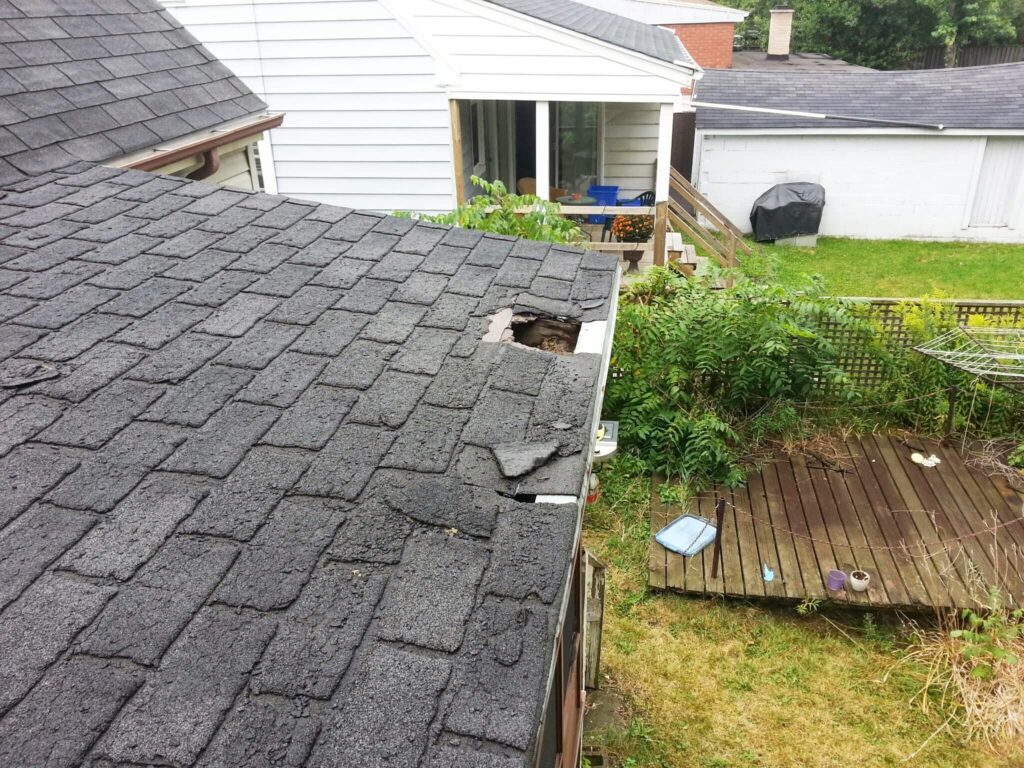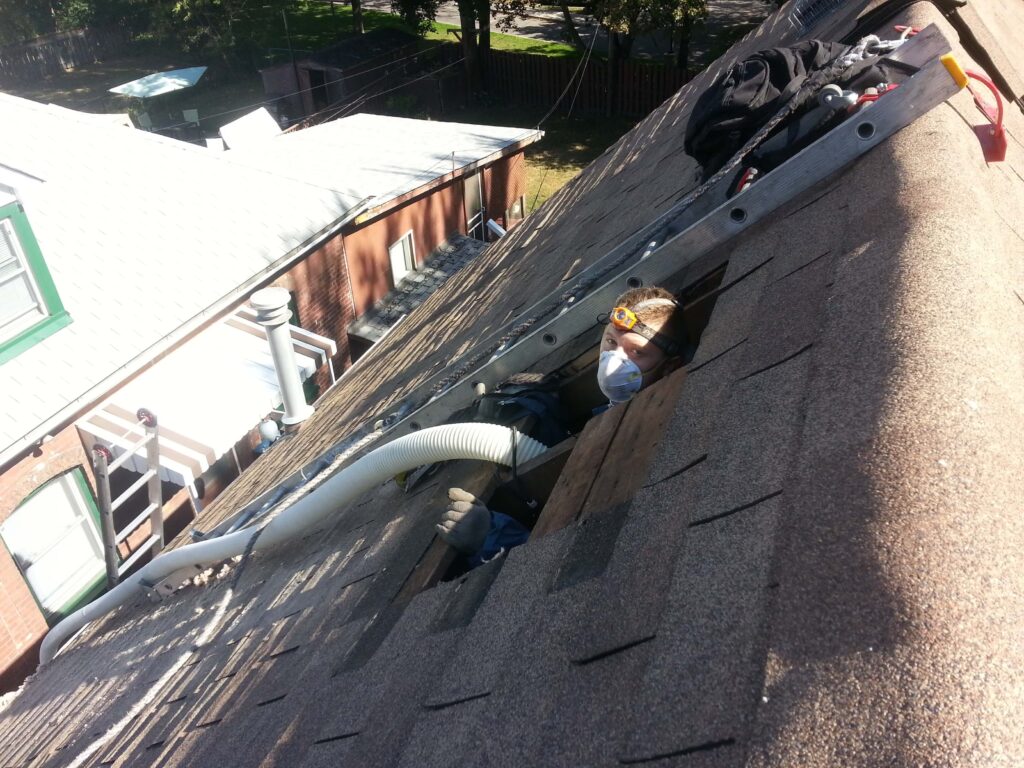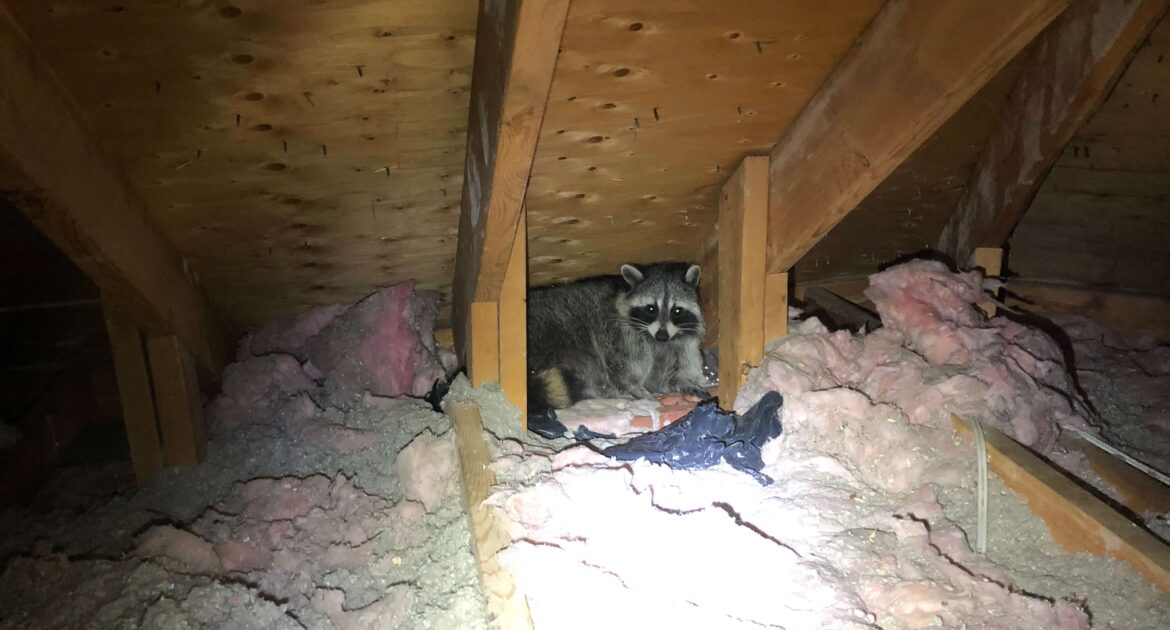Raccoons and roofs go hand in hand in many residential communities around the world. Urban areas that are in the vicinity of raccoon habitats are likely to be faced with periodic raccoon invasion problems, especially during the colder months. The roofs of buildings, in particular, are a favourite of raccoons. Many times, experts trace raccoon invasion problems to one root cause: a roof that facilitates raccoon breaches. Once this notorious animal bandit makes its way into your roof and later into the comfort of your home, you will want to contact wildlife animal control services to help with raccoon removal.
A wildlife removal expert can safely relocate critters out of your home and to their natural habitats. He or she can also identify points of entry, explain to you why raccoons find your home so appealing, and most importantly, teach you how to keep them out. Though the expert you hire can expand on each of these points when you meet with him or her, you can get an idea of how racoon removal works below.
How Raccoons Get Inside Homes
Your roof is often the ideal access point through which raccoons get into your home. Raccoons will scratch openings through already weakened sections of your roof. Once raccoons are inside, they proceed to damage your attic by chewing and scratching almost everything in sight and ripping up insulation to make nests. Their waste (urine and feces) also speeds up the rotting process, especially for wooded areas. Not only that, but raccoon waste harbours numerous diseases such as leptospirosis. Once raccoons establish their dens in your home in the winter, it becomes extremely difficult and time-consuming to remedy the situation.
Outside of weak points, animals get through your roof and into your attic via several means. Those include but are not limited to the following:
- Fascia
- Soffits
- Roof vents
- Loose joints that merge two roofs
- Loose shingles
Each wildlife species has its own motivations for travelling through your roof and into your space in the winter. Raccoons in winter are usually drawn by the warmth and availability of food. Additionally, raccoons that are nursing will aim for your chimney as an ideal location to take care of her kits. These voracious foragers will wildly barrel through your garbage and your valuable items to find food. The mess they leave behind is often shocking to view.
That said, the best way to determine whether you have a potential animal invasion problem is to get experts like those at Skedaddle to assess the space and determine whether there are signs of animal infestation. It is also a good idea to get removal services once an invasion is confirmed, as a removal professional can help you relocate the critters as quickly and humanely as possible.
Prevention Strategies To Keep Racoons Away
The number one prevention strategy for how to keep raccoons away is to invest in roof inspection and repairs. In doing so, you can identify points of weakness and order the necessary repairs. You can also ensure that there are no areas that raccoons can breach easily through their typical clawing means.

If you decide to hire a roofing specialist, try to connect him or her with your raccoon removal professional. The two experts can work together to identify possible points of entry and devise the most effective strategy to protect against re-entry.
Outside of hiring a roofing specialist, there are several steps you can take on your own to prevent raccoons from invading your home. The top prevention tips that your professionals at Skedaddle recommend involve removing or eliminating raccoon attractions by doing the following:
- Seal your garbage bins.
- Take down bird feeders that are close to your home.
- Clean up your yard —meaning, pick up old logs, remove tree stumps and get rid of trash piles.
- Keep pet food in airtight containers or indoors.
- Eliminate errant water sources.
- Protect your fruit and vegetable gardens.
- Treat your lawn for grubs.
- Invest in motion-activated lights and sprinklers.
While the absence of attractions in no way represents a foolproof raccoon prevention strategy, it does help as some raccoons are attracted by potential food. Keeping the animals at bay will go a long way in ensuring that you do not have to call wildlife animal control services for raccoon removal assistance. It will also go a long way toward protecting the integrity of your roof and your home.
How To Get Rid of Raccoons On the Roof
The number one way to get rid of raccoons on your roof or in your home is to hire a raccoon removal professional. In addition to knowing how to humanely relocate baby and mama raccoons from your home, experts have the tools, knowledge and resources necessary to do so in the safest manner possible. Some steps the professional will take to rid and keep your home free of pests are as follows:
- Identify all raccoon entry points, including your roof.
- Remove any babies and place them in a heated reunion box to await their mother’s return.
- Prevent the mother’s reentry to ensure she relocates her babies to a nearby natural den.
- Clear out any contaminated materials and sanitize the area.
- Advise you on how to clear out more extensive contamination.
- Secure your home against future raccoon invasions.

Reputable raccoon removal professionals such as those at Skedaddle have the skill and know-how to clear your home of even the most stubborn raccoon families. Our technicians also partner with our clients to devise and implement strategies that will keep raccoons and other critters out for good.
When To Partner With a Racoon Removal Specialist
Once you notice a raccoon invasion in your home, it’s too late — the family has already taken up residence in your roof or attic. Ideally, you will partner with a wildlife removal company long before wildlife considers heading indoors, such as during the fall months. When you are proactive, you can prevent an infestation entirely and preserve the integrity of your home.
If a raccoon family has already taken up residence in your home, don’t fret — a skilled professional can not only help you remove the critters but also, clean up your home and prevent future visitors. Regardless of which stage of infestation you’re in, the professionals at Skedaddle can help. To get started, contact us to schedule your consultation today.



